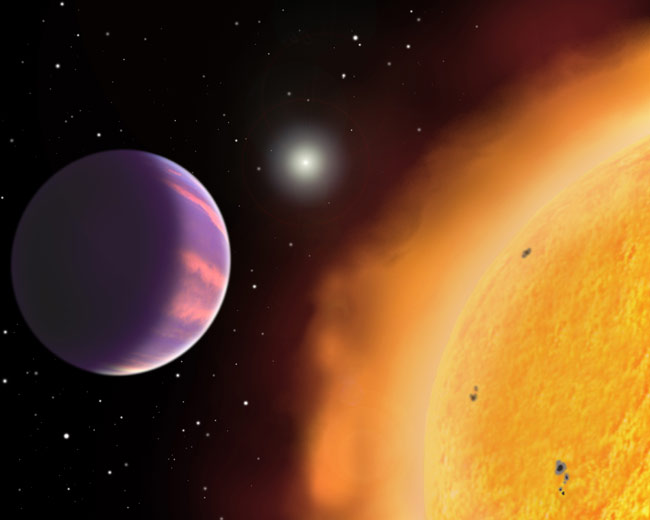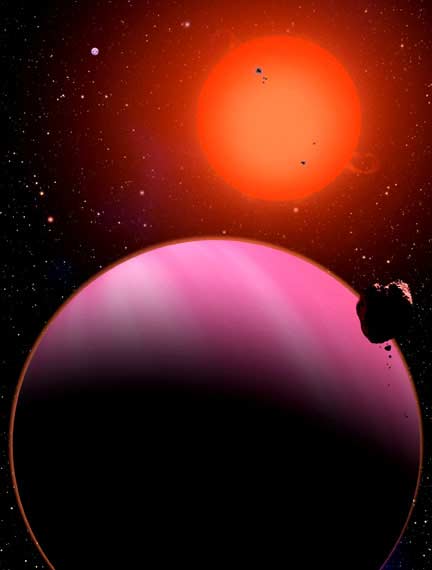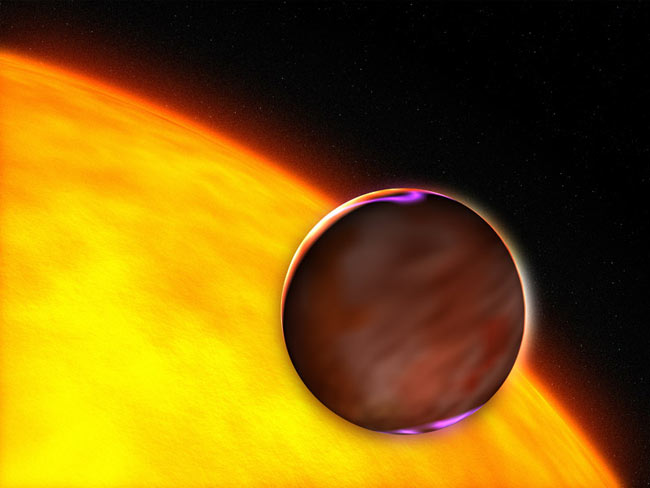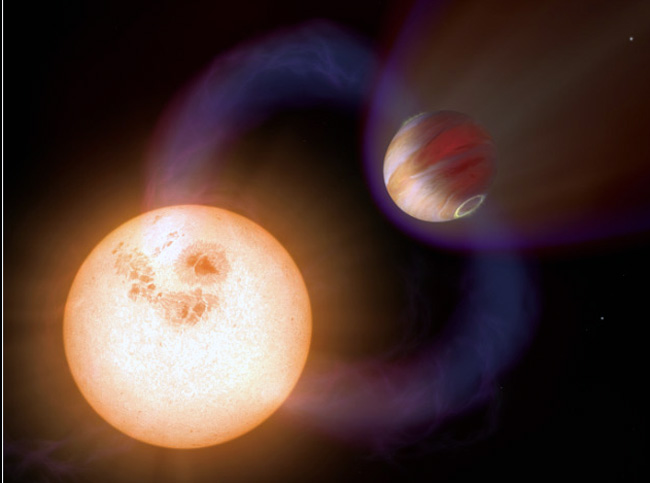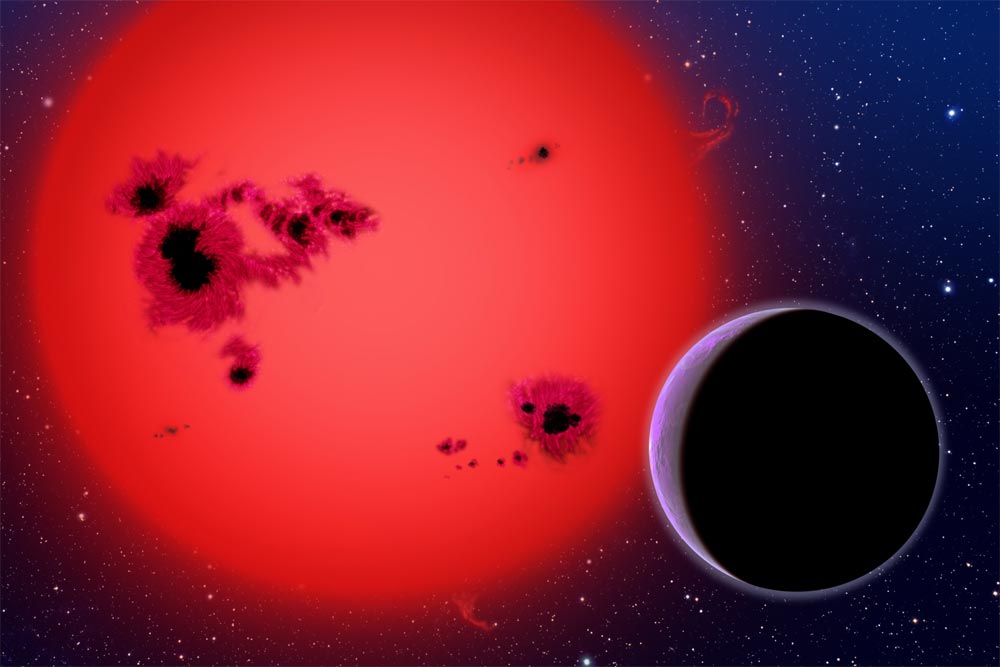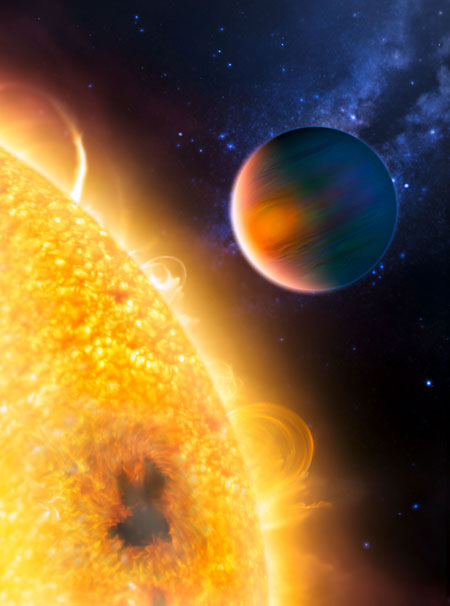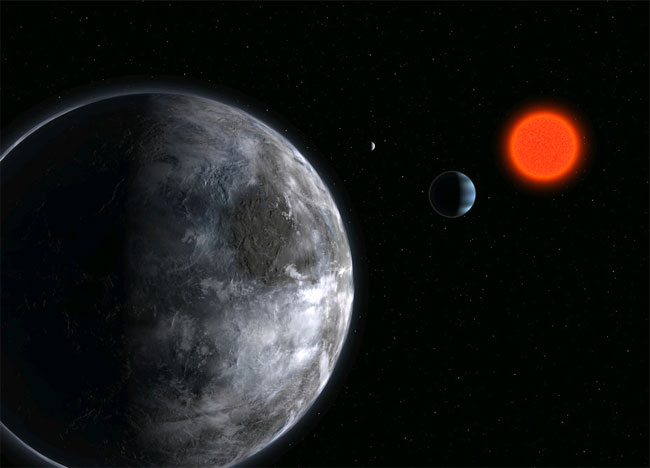The Strangest Alien Planets in Pictures
Oldest Alien Planet
The oldest known planet is a primeval world 12.7 billion years old that formed more than 8 billion years before Earth and only 2 billion years after the Big Bang. The discovery suggested planets are very common in the universe and raised the prospect that life began far sooner than most scientists ever imagined. [Full Story]
The Youngest Known Exoplanet
The youngest exoplanet yet discovered is less than 1 million years old and orbits Coku Tau 4, a star 420 light-years away. Astronomers inferred the planet’s presence from an enormous hole in the dusty disk that girdles the star. The hole is 10 times the size of Earth’s orbit around the Sun and probably caused by the planet clearing a space in the dust as it orbits the star.
The Puffiest
A planet lighter than a ball of cork is one of the puffiest alien planets known to date. Called HAT-P-1, the planet is about half as massive as Jupiter but about 1.76 times wider-or 24 percent larger than predicted by theory. It could float in water, if there was a tub large enough to hold it. [Full Story]
Super Neptune
While Neptune has a diameter 3.8 times that of Earth and a mass 17 times Earth's, the new world (named HAT-P-11b) is 4.7 times the size of Earth and has 25 Earth masses. The newfound world orbits very close to its star, revolving once every 4.88 days. As a result, it is baked to a temperature of around 1100 degrees F. The star itself is about three-fourths the size of our Sun and somewhat cooler. [Full Story]
Tilted World
Most planets orbit in a plane that corresponds to their parent star's equator. But XO-3b orbits with a crazy tilt of 37 degrees from its star's equator. The only other known example of such an oddly angled orbit was Pluto, until its demotion to dwarf planet status. There is, however, a planet known to orbit backwards around its parent star. [Full Story]
Fastest Planet
SWEEPS-10 orbits its parent star from a distance of only 740,000 miles, so close that one year on the planet happens every 10 hours. The exoplanet belongs to a new class of zippy exoplanets called ultra-short-period planets (USPPs), which have orbits of less than a day. [Full Story]
Waterworld
The extrasolar planet GJ 1214b is a rocky planet rich in water that sits about 40 light-years away. It orbits a red dwarf star. It is the only known "Super-Earth" exoplanet — worlds that have masses between Earth and Neptune — with a confirmed atmosphere. The planet is about three times the size of Earth and about 6.5 times as massive. Researchers think it is likely a water world with a solid center. [Full Story]
Breaking space news, the latest updates on rocket launches, skywatching events and more!
Atmosphere Detected
Astronomers have been able to detect the atmospheres around several exoplanets, including HD 189733b – one of the first alien words to have its atmosphere sniffed to determine its composition. Glowing methane, which can be produced naturally or be a biological byproduct, has been detected on the planet. [Full Story]
Endangered World
When astronomers observed WASP-18b, they may have seen it in the cosmic moment before its death. This planet, possibly an ill-fated world, whips around its star in less than one Earth day. Scientists think that this speed coupled with the planet's heft yields strong gravitational tugs that can alter the planets orbit. If the planet orbits faster than its star spins, it should gradually be moving inward towards its sun, and its doom. [Full Story]
Most Habitable
One of the several planets within the Gliese 581 star system, called Gliese 581 d, may be one of the most potentially habitable alien worlds known. It is about 8 times the mass of Earth, and located in an orbit just right for liquid water to exist on the surface. Water is a key ingredient for life as we know it. Gliese 581 is a red dwarf star 20.5 light-years from Earth [Full Story]

Space.com is the premier source of space exploration, innovation and astronomy news, chronicling (and celebrating) humanity's ongoing expansion across the final frontier. Originally founded in 1999, Space.com is, and always has been, the passion of writers and editors who are space fans and also trained journalists. Our current news team consists of Editor-in-Chief Tariq Malik; Editor Hanneke Weitering, Senior Space Writer Mike Wall; Senior Writer Meghan Bartels; Senior Writer Chelsea Gohd, Senior Writer Tereza Pultarova and Staff Writer Alexander Cox, focusing on e-commerce. Senior Producer Steve Spaleta oversees our space videos, with Diana Whitcroft as our Social Media Editor.


